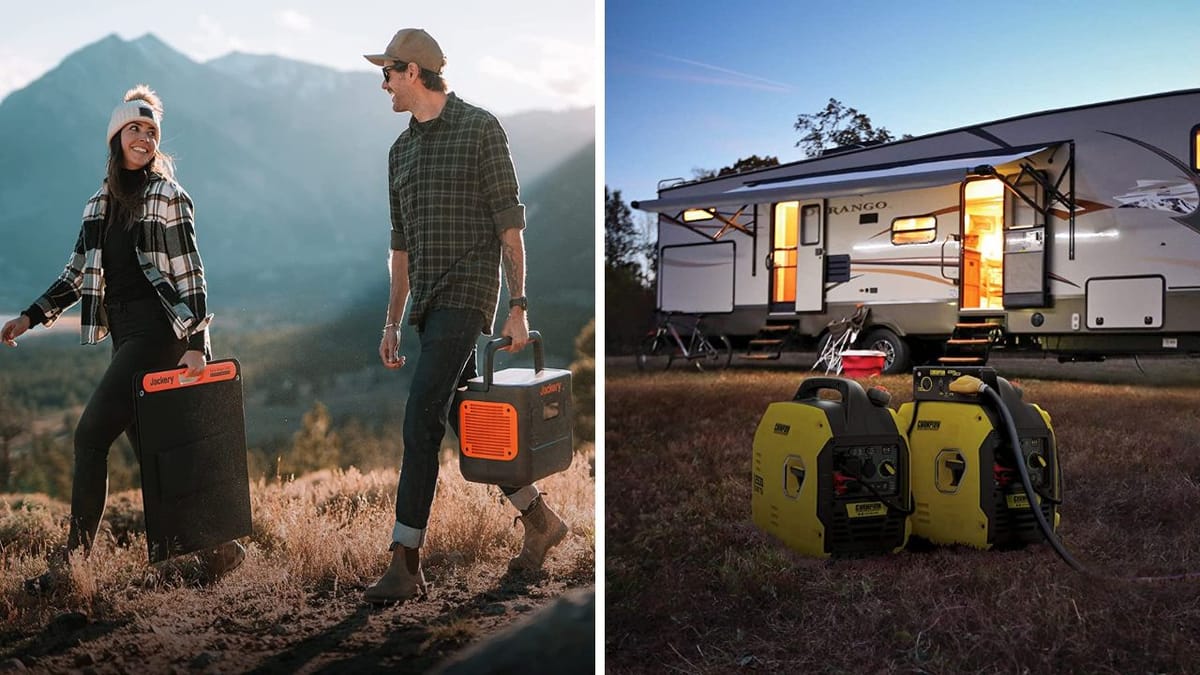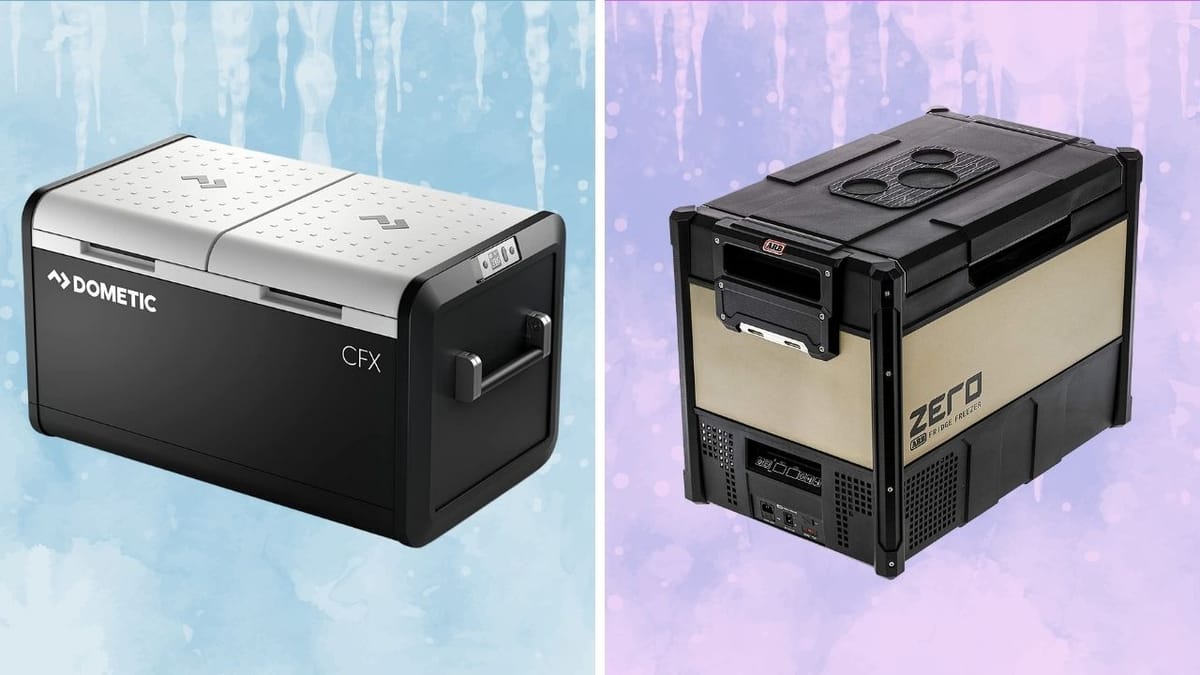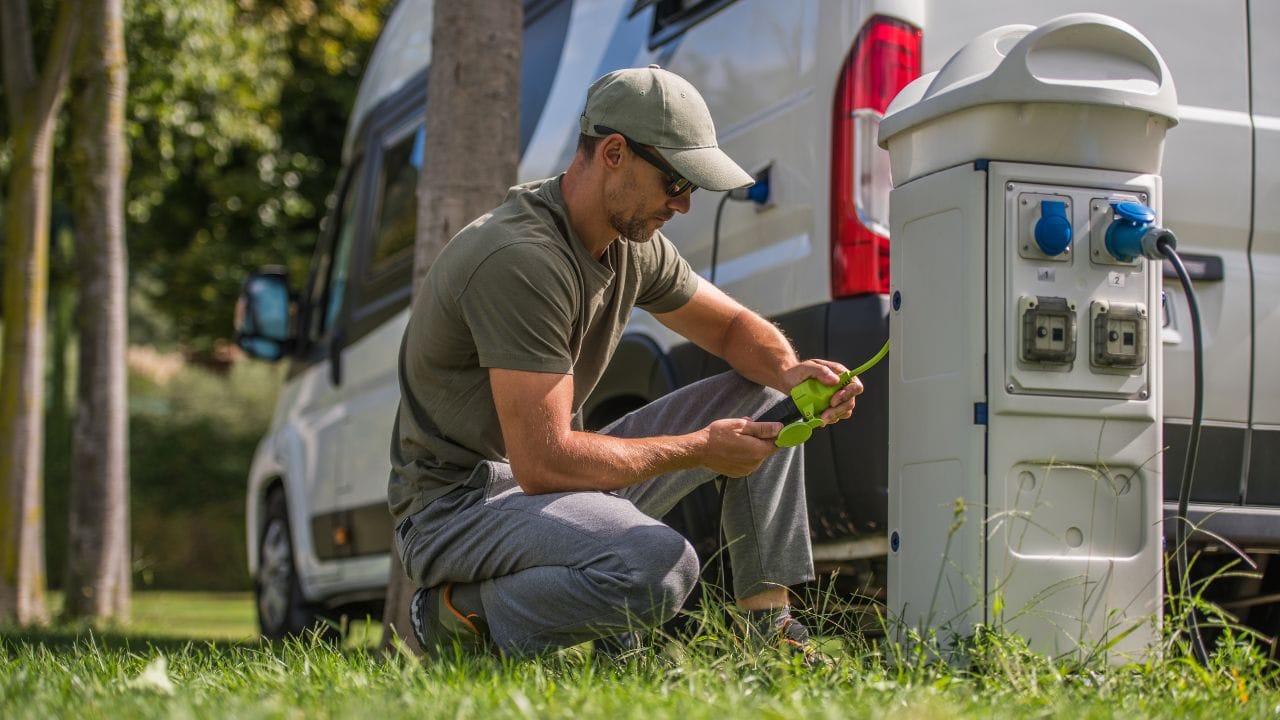
20 Amp vs 30 Amp Camping: What's Best for Your RV?
Get the rundown on 20 amp vs 30 amp camping. Our guide helps you pick the right amp for a stress-free and powered-up trip!
Have you ever found yourself scratching your head at the campsite, wondering whether your trusty air conditioner will stay running without tripping the circuit breaker?
Or perhaps you've pondered over which power cord to plug into that campsite outlet.
Welcome to the world of 20 amp vs 30 amp camping – a place where understanding your power options isn't just convenient, it's essential.
In this article, we're diving deep into the nitty-gritty of camping power. Whether you're chilling with a cold drink in hand or heating up your morning coffee, knowing the difference between a 20 amp and a 30 amp system can make or break your camping experience.
So, let's plug into this electrifying topic and ensure your next outdoor adventure is powered perfectly!
Key Takeaways
- Understanding Amps: Knowing the difference between 20 amp and 30 amp systems is crucial for RV camping. A 20 amp system is suitable for lighter power needs, while a 30 amp system can handle larger appliances and more power-intensive devices.
- Equipment Compatibility: It's important to match your camping appliances with the appropriate amp system. Smaller appliances like lights and phone chargers are fine on a 20 amp system, but larger items like air conditioners and electric water heaters require a 30 amp system.
- Safety and Maintenance: Using surge protectors and regularly checking circuit breakers and voltage levels are essential for the safety and maintenance of your RV's electrical system, regardless of whether it's a 20 amp or 30 amp setup.
- Advanced Technology in RVs: Modern RVs are incorporating advanced technology like smart systems, which offer convenience and efficiency. Adapting these technologies to the specific amp system of the RV is important for optimal operation and safety.
The Basics of Amps in Camping
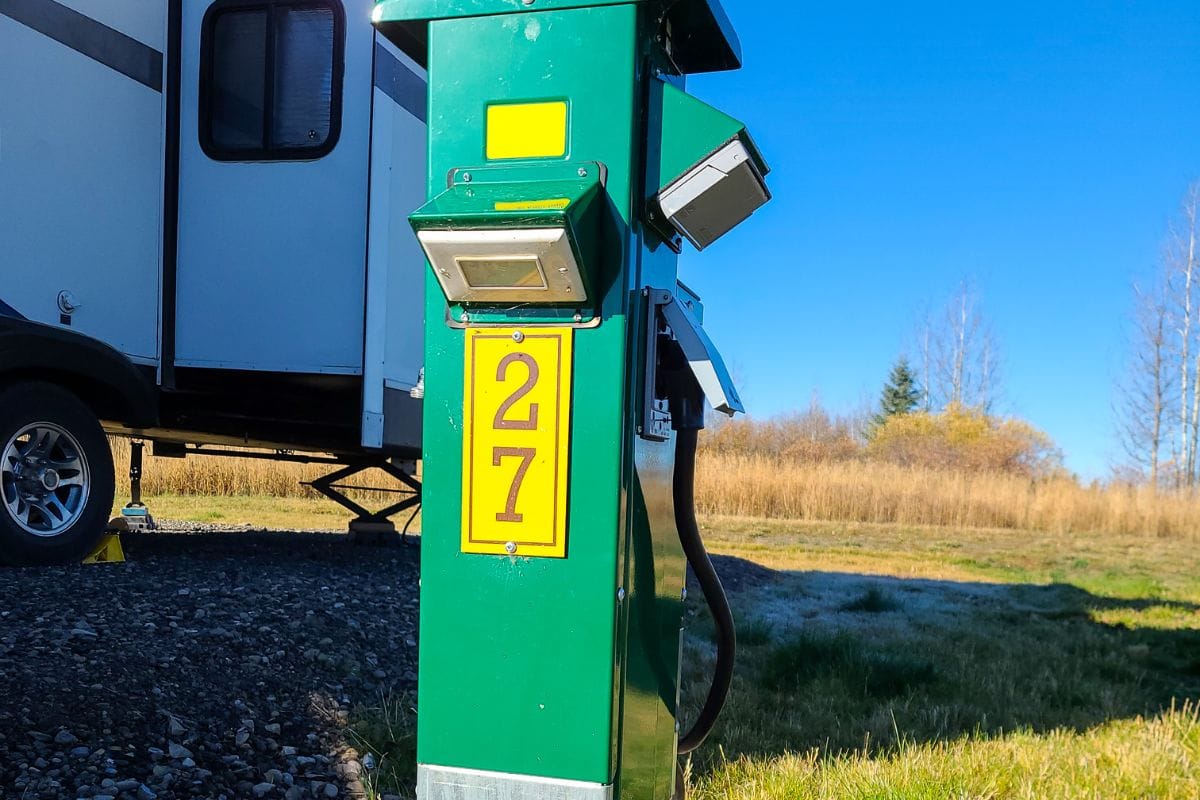
What Are Amps and Why Should You Care?
Imagine electricity as water flowing through a pipe.
In this analogy, amps would be the water flow rate. The more amps you have, the more "water" (or electricity) flows through your "pipe" (electrical system).
In camping, this flow powers everything from your lights to that all-important air conditioner.
But why should you care?
Well, each device you use while camping, from your phone charger to your fridge, draws a certain amount of power, measured in amps.
If your RV or tent setup tries to draw more power than the system can handle, hello darkness, my old friend! You'll be sitting in the dark, unplugging devices, and flipping circuit breakers back on.
20 Amp vs 30 Amp Systems: The Power Play
Now, let's talk about the main players: 20 amp and 30 amp systems. You'll typically find these ratings on outlets at campsites, and they determine how much power you can use.
- 20 Amp Systems: These are the more common household-type outlets. They're great for lighter power needs. Think charging phones, running small TVs, or keeping a few lights on. A 20 amp outlet provides up to 2,400 watts of power (20 amps x 120 volts = 2,400 watts). It's enough for the basics, but add a heavy-duty appliance like an air conditioner into the mix, and you might be pushing its limits.
- 30 Amp Systems: These are the heavy lifters. If you're bringing along items with a bigger appetite for power, like a larger air conditioner or an electric water heater, a 30 amp system is what you need. It offers up to 3,600 watts of power (30 amps x 120 volts = 3,600 watts), giving you that extra juice to run multiple devices simultaneously without tripping breakers.
Powering Your Campsite: A Balancing Act
It's all about balance. You wouldn't want to overload a 20 amp system with too many gadgets, just like you wouldn't use a sledgehammer to crack a nut.
Understanding the power requirements of your devices and matching them to the right amp system is key to a smooth camping experience.
Equipment and Power Requirements
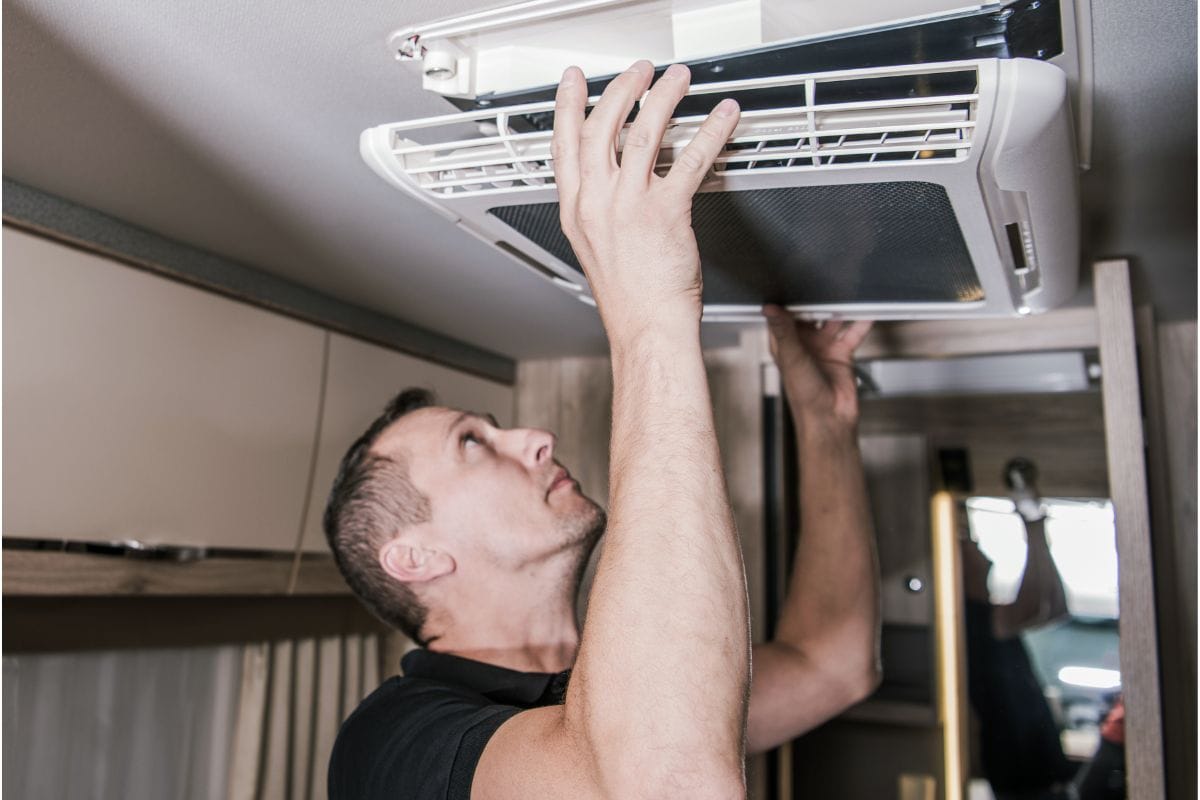
Alright, let's get into the heart of your camping setup: the equipment.
You've got your air conditioner to beat the heat, an electric water heater for those brisk mornings, and of course, a coffee pot for that essential morning brew.
But how do you ensure they all get the power they need without blowing a fuse? Let's break it down.
Common Camping Appliances and Their Power Hungry Ways
Every appliance you bring along on your camping trip has its own appetite for power. Here's a quick look at some common items:
- Air Conditioner: The big kahuna of power consumption. A typical RV air conditioner can use anywhere from 12 to 16 amps. That's a hefty chunk of your 20 amp budget, but well within the comfort zone of a 30 amp system.
- Electric Water Heater: These guys usually draw around 9 to 13 amps. Not as demanding as the air conditioner, but still a significant load.
- Coffee Pot: Surprisingly, brewing your morning cup can take about 5 to 8 amps. It's not a massive draw, but it's something to keep in mind when you're calculating your power needs.
Matching Your Gear with the Right Amp System
Now, how do you figure out which amp system is your camping soulmate? It's all about the math. Here's a simple way to do it:
- List Your Appliances: Write down everything you plan to power up.
- Check Their Amp Usage: Look for a label on each appliance, or check the manual. It should tell you how many amps each device uses.
- Add It Up: Tally the amps for all your devices. If the total is close to or over 20 amps, you're in 30 amp territory.
Example Time!
Let's say you have an air conditioner (15 amps), a water heater (12 amps), and you're dying for that coffee (6 amps).
That's a total of 33 amps.
In this case, a 30 amp system is your best bet. It gives you enough wiggle room to run these appliances without tripping breakers.
Steps to Calculate Total Amp Draw:
- Identify the Wattage of Each Appliance: Refer to the appliance's label or manual to find the wattage rating.
- Convert Wattage to Amperage: Use the formula A=W/V, where A is the current in amps, W is the power in watts, and V is the voltage (typically 120V for household and RV appliances).
- Add the Amp Draw of All Appliances: Sum the amp draw of each appliance to find the total amp draw.
Wattage to Amp Calculator
| Appliance | Wattage | Amp Draw |
|---|---|---|
| LED Light | 6 | 0.05 |
| Phone Charger | 5 | 0.04 |
| Small Fan | 20 | 0.17 |
| Coffee Maker | 600 | 5.00 |
| Microwave | 1000 | 8.33 |
| Electric Water Heater | 1440 | 12.00 |
| RV Air Conditioner | 1500 | 12.50 |
| Large Fridge | 150 | 1.25 |
Pro Tips for Power Management
- Use an Extension Cord Wisely: If you're using an extension cord, make sure it's rated for the amp load you're putting on it. A cord that's not up to the task can be a safety hazard.
- Stagger Your Usage: Try not to run high-power appliances simultaneously. Maybe wait for the coffee after the air conditioner has done its morning chill session.
- Monitor Your Power: Consider investing in a power monitor. It can help you keep an eye on your total power draw, so you don't accidentally overload your system.
By understanding the power needs of your camping appliances and choosing the right amp system, you can ensure a trip that's both enjoyable and free from electrical mishaps.
So, go ahead, plan your power strategy, and get ready for a smooth and electrified camping experience!
Advantages and Limitations of 20 Amp Systems
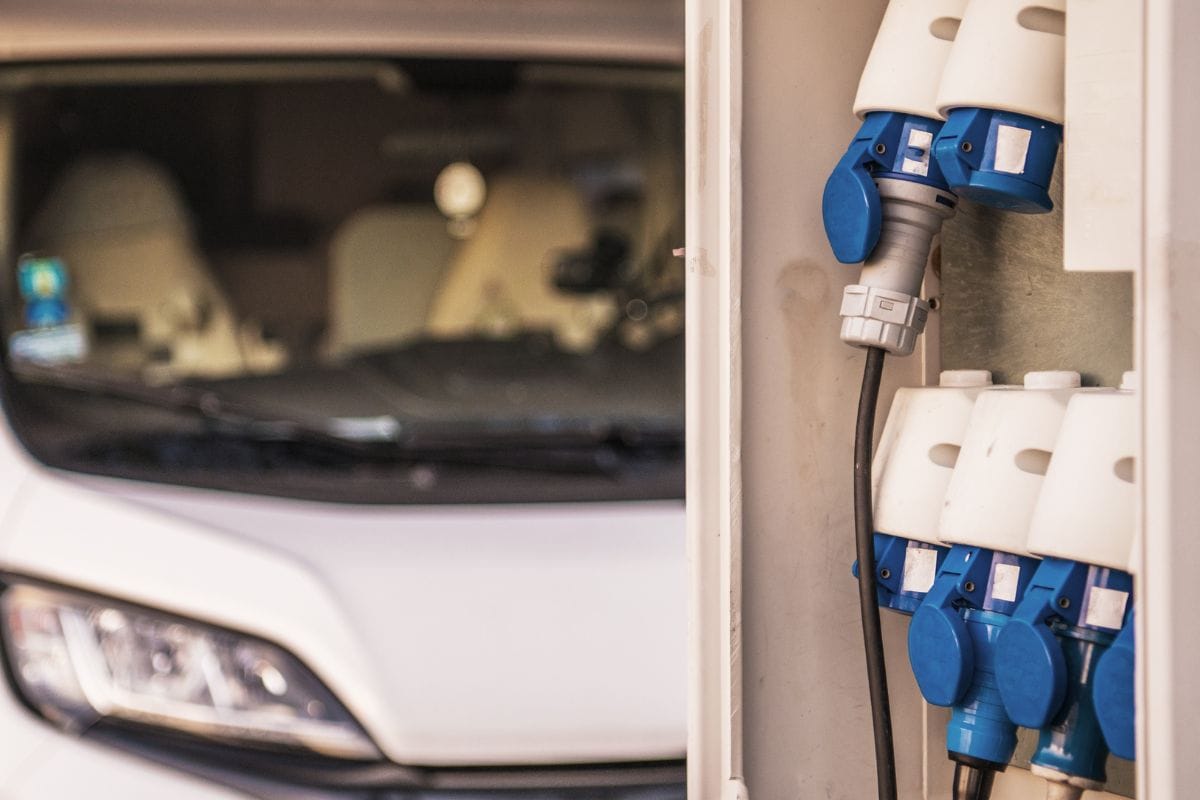
Now, let's zoom in on the 20 amp system. It's like the trusty Swiss Army knife in your camping toolkit – versatile, but with its limits.
Understanding these can help you make the most of your outdoor experience without any electrical hiccups.
The Rundown on 20 Amp Systems
A 20 amp system is pretty standard, not just in campsites but also in many homes. It's designed to handle up to 2,400 watts of power (remember, that's 20 amps multiplied by 120 volts).
This might sound like a lot, but in the world of electrical appliances, it can get eaten up pretty quickly.
Advantages of 20 Amp Systems
- Energy Efficiency: These systems are great for when you're not using a ton of power-hungry devices. They're efficient and can handle your basic needs like lighting and charging batteries.
- Widespread Availability: Most campsites are equipped with 20 amp outlets, so you'll rarely find yourself in a bind looking for the right connection.
- Cost-Effective: Generally, using a 20 amp system can be more economical, both in terms of the fees at a campsite and the energy you consume.
Limitations to Keep in Mind
- Limited Power: The key word here is 'limited'. High-demand appliances like large air conditioners or microwaves can quickly max out a 20 amp system.
- Circuit Breaker Trips: Overloading a 20 amp system can often lead to tripping the circuit breaker. This is your system's way of saying, "Hey, I need a break!"
When to Use a 20 Amp System
So, when is a 20 amp system your camping go-to? Here are a few scenarios:
- Lighting and Small Appliances: Perfect for powering LED lights, charging your phone, or running a small fan.
- Battery Charging: Need to keep your camera or drone batteries charged for those epic nature shots? A 20 amp system has got you covered.
- Low-Power Cooking Devices: Think small electric grills or a slow cooker. These can usually get by just fine on a 20 amp system.
A Real-World Example
Imagine you're camping and want to use a few LED lights (0.5 amps each), charge your phone (1 amp), and run a small fan (2 amps).
Even if you use all these simultaneously, you're only looking at around 4 amps – well within the safe zone of your 20 amp system.
Quick Tips for 20 Amp Success
- Monitor Your Usage: Keep an eye on how many devices you're using at once. If your coffee maker and hairdryer are both on, maybe hold off on using the toaster.
- Plan Appliance Use: If you need to use a higher-power device, plan to use it when other appliances are off. This way, you avoid overloading your system.
- Safety First: Always ensure your equipment is in good condition. Frayed wires or damaged appliances can cause more than just power issues – they can be a safety hazard.
By understanding the strengths and limitations of a 20 amp system, you can tailor your camping experience to be both enjoyable and safe. It's all about knowing your needs and planning accordingly.
So, pack up, plug in, and enjoy the great outdoors, powered just right for your adventure!
Advantages and Limitations of 30 Amp Systems
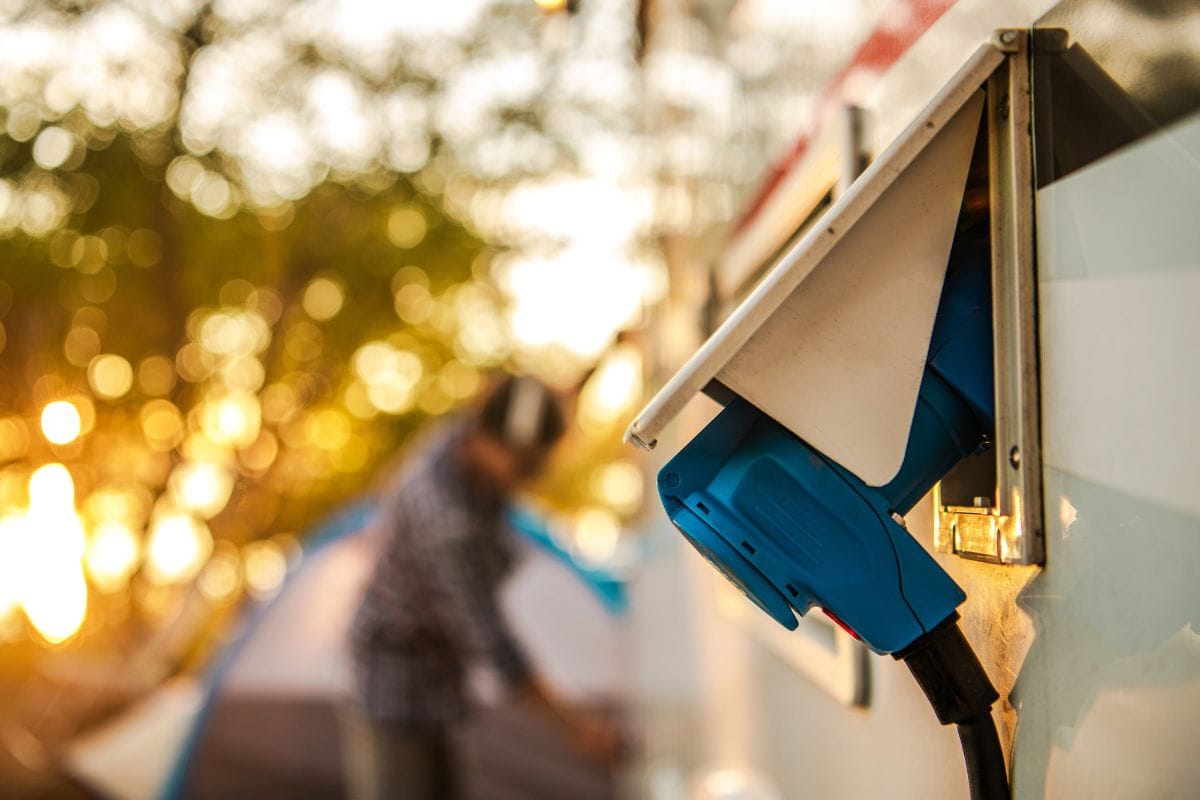
Alright, let's shift gears and talk about the 30 amp system.
Think of it as the big brother to the 20 amp system – more robust, with a bit more muscle for your power-hungry gadgets. But as with everything, it's not without its quirks. Let's dive in!
The Powerhouse: 30 Amp Systems Explained
A 30 amp system is like having a bigger "pipe" for electricity to flow through, compared to the 20 amp system. It can handle up to 3,600 watts of power (yep, that's 30 amps times 120 volts).
This means it can support a greater number of appliances or more power-intensive ones without breaking a sweat.
Advantages of 30 Amp Systems
- Higher Power Capacity: With more wattage at your disposal, you can run bigger appliances simultaneously. This is great for RVs equipped with amenities like full-size refrigerators or multiple AC units.
- Flexibility: A 30 amp system offers more flexibility in terms of what you can plug in and use at the same time. It's like having a bigger playground for your electrical devices.
- Main Breaker Protection: These systems often come with a main breaker, which acts as a safeguard against overloading. It's like having a built-in security guard for your electrical safety.
Limitations to Consider
- Not as Common in Older Campsites: Some older campsites might not have 30 amp outlets, so it's always good to check ahead or have an adapter handy.
- Higher Cost: Generally, using a 30 amp system can be slightly more expensive, both in terms of campsite fees and the energy used.
Ideal Uses for a 30 Amp System
So, when does a 30 amp system really shine? Here are some perfect scenarios:
- Running an Air Conditioner: If you've got a beefy air conditioner to keep cool during those hot summer days, a 30 amp system will ensure it runs smoothly without tripping any breakers.
- Using a Microwave: Want to pop some popcorn or heat up leftovers? A microwave can be quite power-hungry, and a 30 amp system can handle it alongside your other appliances.
- Operating an Electric Water Heater: For those who can't do without a hot shower, even while camping, a 30 amp system can keep your water heater running without a hitch.
A Practical Example
Imagine it's a hot day, and you're running your AC (let's say it's 15 amps), you decide to heat up lunch in the microwave (about 10 amps), and your partner is taking a shower with the electric water heater on (around 12 amps).
With a 20 amp system, you'd be in trouble. But with a 30 amp system, you're just at 37 amps – close to the limit, but still within safe operating range.
Tips for Maximizing Your 30 Amp Experience
- Balance Your Load: Even with the extra power, it's wise to balance your usage. Don't run all your high-power appliances at once if you can help it.
- Invest in a Surge Protector: Protect your RV and appliances from unexpected power surges.
- Regular Maintenance: Keep an eye on your RV's electrical system. Regular checks can prevent issues and ensure everything runs smoothly.
By understanding and utilizing the capabilities of a 30 amp system, you can elevate your camping experience, especially if you're bringing along those extra comforts from home.
It's all about knowing your needs and planning your power usage to match. Happy camping with all the power you need at your fingertips!
Advanced Equipment and Technology in RV Camping
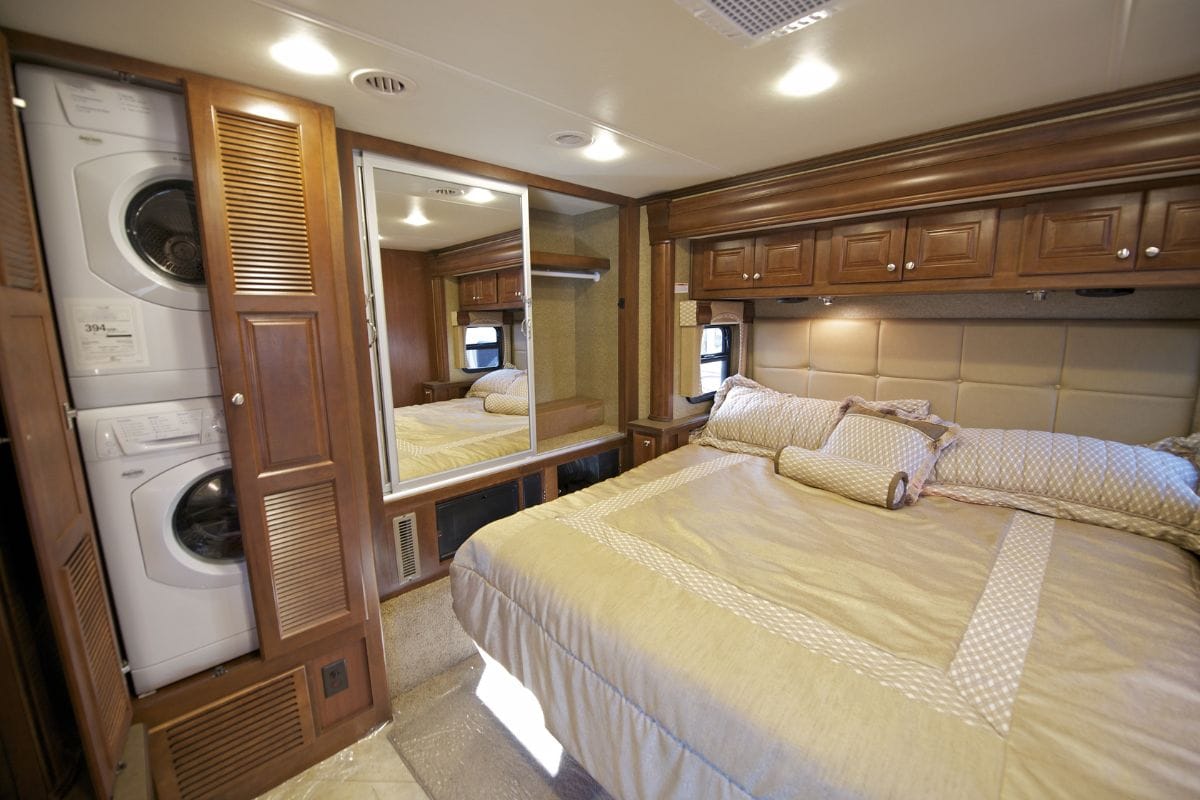
Let's talk about the cool, cutting-edge gadgets and gizmos in the RV world. Camping isn't just about connecting with nature anymore; it's also about how advanced equipment and smart systems are revolutionizing the RV industry.
From surge protectors to soft start adapters, technology is making RV camping smoother, safer, and more enjoyable. Let's plug into the latest tech trends!
Embracing the Future: High-Tech RV Camping
The RV industry has been buzzing with innovations.
We're seeing everything from solar-powered systems to smart devices that let you control your RV's features with just a tap on your smartphone.
These advancements aren't just fancy add-ons; they're about enhancing efficiency, convenience, and safety in your mobile home away from home.
Smart Systems: The Brain of Your RV
- Smart Thermostats: Imagine adjusting the temperature from your hiking trail or your fishing spot. Smart thermostats in RVs can be controlled remotely, ensuring you return to a perfectly cooled or warmed space.
- Remote Monitoring: With apps and smart devices, you can now monitor everything from battery levels to water tanks in real-time, ensuring you're never caught off guard.
Adapting Technology to Different Amp Systems
As RVs get more sophisticated, so does the need to safely and efficiently manage power, regardless of whether you're hooked up to a 20 amp or 30 amp system.
Surge Protectors: Your RV's First Line of Defense
- Why It's Essential: A surge protector is like a gatekeeper, protecting your RV from unexpected spikes in power that can fry your electronics. Think of it as an insurance policy for your RV's electrical system.
- Choosing the Right One: Make sure you get a surge protector that matches your RV's amp system. A 30 amp surge protector won't do much good on a 20 amp system, and vice versa.
Soft Start Adapters: A Gentle Power Boost
- The Magic of Soft Start: These nifty devices gradually increase power to your air conditioner, avoiding the sudden surge that can trip breakers, especially in 20 amp systems.
- Benefit: By using a soft start adapter, you can run more power-intensive appliances without overloading your system, making it a game-changer for those hot summer days.
Adapters: Bridging the Amp Gap
- The Role of Adapters: Not all campsites are created equal. An adapter allows you to connect your RV's 30 amp or 50 amp plug to a site's 20 amp outlet, and vice versa.
- A Tip: Always carry a couple of adapters. They're the Swiss Army knife in your RV's toolkit, ensuring you're never stuck without power.
Staying Ahead with Tech
The key to making the most of these technologies is staying informed and choosing the right gadgets for your RV setup.
Whether it's a smart system for convenience or a surge protector for safety, these advancements are all about enhancing your camping experience.
So, embrace the tech, stay powered up, and enjoy the great outdoors with all the comforts of modern RV camping. Your next adventure awaits, and it's more connected and convenient than ever!
Safety and Maintenance Considerations
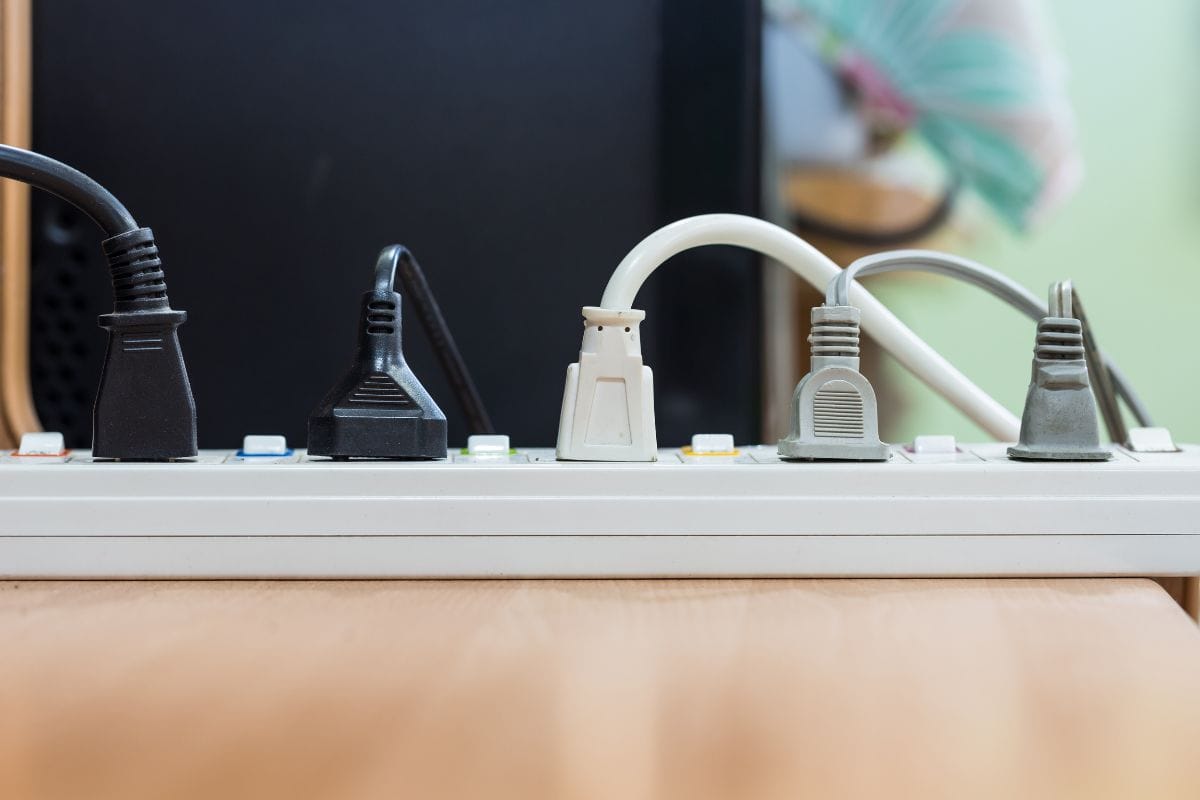
Let's talk about keeping you and your RV safe and sound.
Whether you're plugged into a 20 amp or 30 amp system, understanding a few key safety and maintenance tips can save you from headaches (and potential hazards) down the road.
After all, a safe camping trip is a happy camping trip!
Safety First: Tips for Using 20 and 30 Amp Systems
Circuit Breakers: Your Safety Net
- What They Do: Circuit breakers are like guardians. They 'break' or cut off the electrical flow when the current exceeds what the system can safely handle.
- Tip: Regularly check your RV's circuit breakers. If they trip often, it's a sign you're overloading the system or there's a potential electrical issue.
Surge Protectors: More Than Just a Convenience
- Why They're Crucial: Surge protectors shield your RV from sudden spikes in voltage which can occur during storms or due to unpredictable power supply at campsites.
- Best Practice: Always use a surge protector. It's a small investment that protects your expensive RV appliances.
Low Voltage: The Silent RV Menace
- The Issue: Low voltage can be just as harmful as high voltage. It puts extra strain on motors, like those in your AC, potentially leading to overheating and damage.
- How to Combat It: Consider a voltage regulator or monitor. These devices can alert you to low-voltage situations so you can take action before damage occurs.
Keeping Things Running Smoothly: Maintenance Tips
Regular Checks: The Key to Longevity
- Routine Inspections: Regularly inspect your RV's electrical cords and outlets for signs of wear, tear, or damage. Nip any issues in the bud before they become bigger problems.
- Clean Connections: Keep your plug and outlet connections clean. Dirt and grime can cause poor connections and lead to overheating.
Managing Your Power Bill and Efficiency
- Monitor Your Usage: Keep an eye on how much power you're using. Devices like power monitors can help you stay within your RV's electrical capacity and manage your power bill.
- Efficient Appliance Use: Be mindful of using high-power appliances. Stagger their use to avoid peak power draw times, which can strain the system and increase your power bill.
Voltage Wisdom: Keeping the Current in Check
- Understand Your Needs: Know the voltage requirements of your RV and appliances. Using the correct voltage is crucial for safety and efficiency.
- Regular Voltage Checks: Use a voltmeter to check the campsite's power source before plugging in your RV. This can prevent potential electrical issues related to incorrect voltage.
By following these safety and maintenance tips, you're not just protecting your RV; you're ensuring a worry-free and enjoyable camping experience.
Remember, a little precaution goes a long way in the great outdoors. Stay safe, and happy camping!
Real-Life Applications and Case Studies
Alright, let's bring all this technical talk into the real world. Imagine you're out there in the wild or cozied up in a bustling campground.
How do these amp choices play out in actual camping scenarios?
Let's look at some case studies to see how choosing between a 20 amp and a 30 amp system can impact your camping experience.
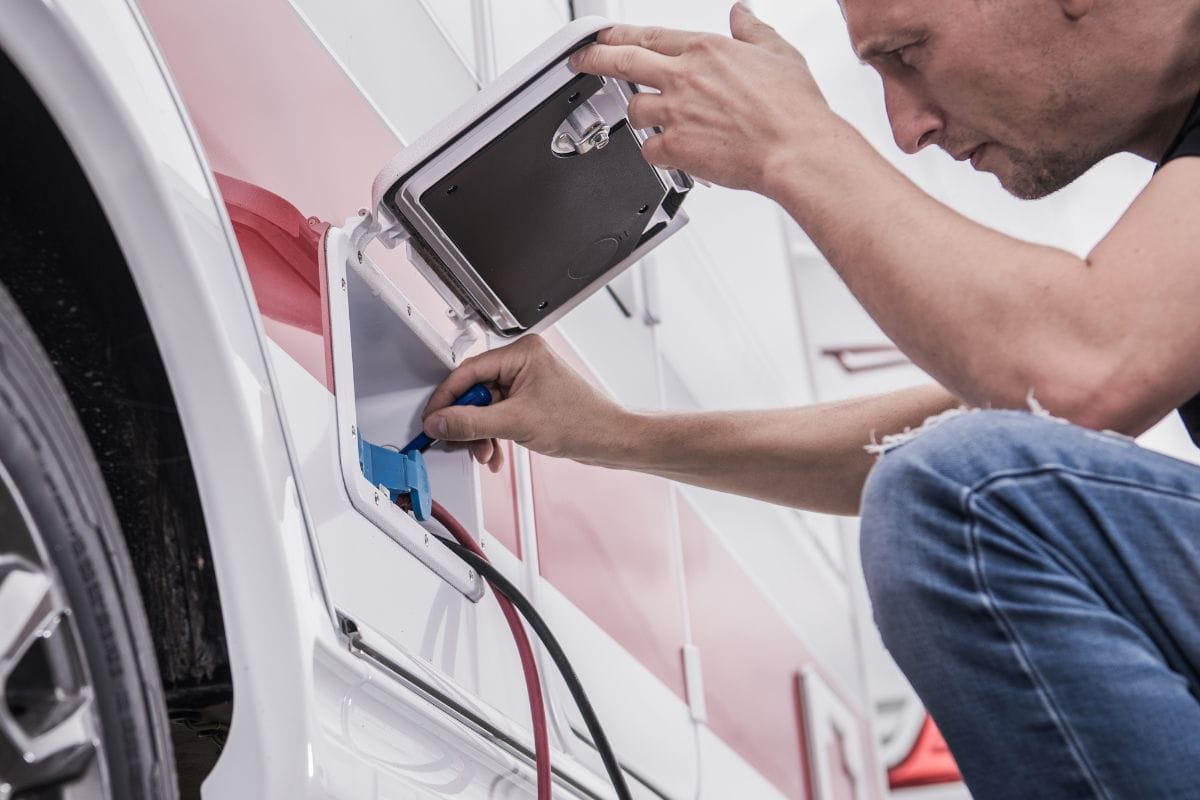
Case Study 1: The Weekend Warrior in a Small Camper
- Scenario: You're in a small camper at a quaint campground. Your setup includes basic lighting, a small fridge, a phone charger, and a coffee maker.
- Amp Choice: A 20 amp system is perfect here. Your power draw is low – lights might take 1 amp, the fridge 3-4 amps, and the coffee maker around 5-8 amps when in use.
- Outcome: With a 20 amp system, you can enjoy your weekend getaway without worrying about tripping the circuit. It's economical and efficient for your needs.
Case Study 2: The Full-Time RVer with All the Bells and Whistles
- Scenario: You live in your RV full-time. You've got a couple of AC units, a microwave, a large fridge, and you often use high-power tools.
- Amp Choice: A 30 amp system is a must. Your AC units alone can draw up to 15 amps each, and the microwave can use about 10 amps.
- Outcome: With a 30 amp system, you can run your AC, cook, and use your tools without constantly worrying about overloading your system. It provides the necessary power for a comfortable, full-time living situation.
Frequently Asked Questions
What does 20 30 amp mean at a campsite?
At a campsite, "20 30 amp" means there are two types of electrical hookups for your RV or camper. A 20 amp hookup is for smaller power needs, like lights and charging phones. A 30 amp hookup can handle bigger things like air conditioners and large fridges.
What is the difference between 20 amps and 30 amps?
The difference between 20 amps and 30 amps is how much electricity they can handle. A 20 amp system is for smaller, less power-hungry devices. A 30 amp system can power bigger things like air conditioners and big fridges.
Is 20 amps enough for a RV?
Yes, 20 amps can be enough for a small RV if you use less power. It's good for things like lights, charging phones, and small appliances. But for bigger items like air conditioners, you might need more power.
Final Thoughts
So, what have we learned about the world of 20 amp vs 30 amp camping?
It's all about understanding your power needs and matching them to the right system. A 20 amp system is great for lighter, simpler setups – think weekend trips in a small camper.
But if you're rolling in with a fully decked-out RV or living the full-time camper life, a 30 amp system will be your best friend, handling a higher electric load and more connected devices without breaking a sweat.
When you're planning your next outdoor adventure, take a moment to consider your camping equipment and power requirements.
Choosing the right amp system can make all the difference in ensuring a smooth, enjoyable camping experience. Remember, it's not just about having power; it's about having the right amount of power.
So, pack up, plug in, and hit the road with confidence, knowing you've got the power you need for all your camping adventures. Happy camping, and may your travels be electrifying in the best way possible!
Before You Go...
